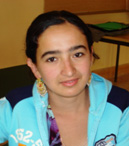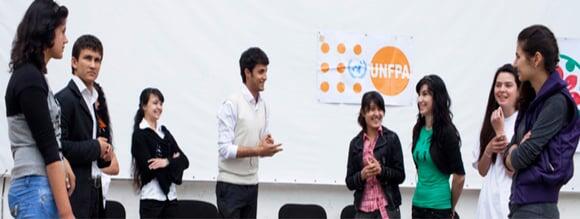DUSHANBE, Tajikistan — Although fewer than 10,000 HIV infections have been reported in the Republic of Tajikistan, which has a population of almost 7 million, the HIV prevalence has been steadily increasing in the country for more than two decades.
The major factors facilitating the spread of the virus in this Central Asia country, which is considered to be in the early stages of an epidemic, include poor knowledge of how the virus is transmitted and a reluctance to discuss it, as well as migration patterns. (Large numbers of men travel to Russia, which has a much higher HIV prevalence, for work.) Eastern Europe and Central Asia is the only region where AIDS-related deaths have continued to rise, according to a new report published by UNAIDS.
Rural youth are increasingly at risk
With more than 30 per cent of Tajikistan’s population under the age of 25, and more than 70 per cent of the population living in the countryside, rural youth are increasingly at risk. In this traditional Muslim society, the dissemination of information through peer education has become an effective strategy to increase the knowledge of young people about their sexual and reproductive health and reproductive rights, as well as the various forms of HIV prevention.
Khairi Kamolova is a 20-year-old girl who works for the Youth Committee of Vakhsh District. She attended a National Y-PEER (Youth Peer Education Network) Training of Trainers supported by UNFPA in Tajikistan in 2008 and since that time has actively supported the network and shares information of prevention of HIV and other sexually transmitted infections among rural youth. Started in Eastern Europe to deal with the dramatic increase in HIV prevalence among youth in that region, Y-PEER has become an international network that connects over 7000 young peer educators with information, training, support and a wide range of electronic resources.

During her work she has faced different challenges, from misunderstandings by her fellow villagers, to lack of financial resources to work with youth. But she is sustained by her belief that saving even one life is an important contribution. It is heartbreaking for her to learn of cases in which migrants infected their loved ones with HIV without knowing they were positive.
Helping families cope
Some stories have a happier ending. For instance, Vladimir migrated to the Russian Federation to earn money to start his business. While staying in there for a year, he became infected with HIV. When he found out his status, Vladimir called home and requested his parents to send his wife, Alina, and two children back to her family, to protect her.
She, in turn, contacted the information centre, and through Khairi was introduced to Parvina Nuridinova, the Y-PEER Focal Point in Tajikistan. “I met several times with the family and answered their various questions”, says Parvina. “They most feared not knowing the basic facts about HIV and AIDS,” says Parvina. “Together with village committee representatives, we spoke with the husband’s parents… We provided information on how the wife could be protected from contracting HIV. Now the wife is taking care of her husband and supporting him.”
In Tajikstan, as in many other parts of the world, young people are leading the HIV ‘prevention revolution.’
Note: The real names of Vladimir and Alina referred to in this article have not been used to protect their identities
- Reported by Parviz Boboev, Project Associate on Communications and Youth UNFPA CO, Tajikistan


